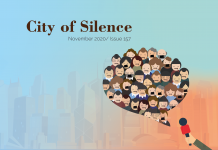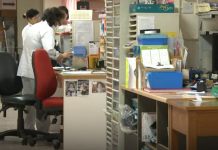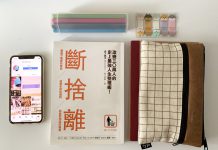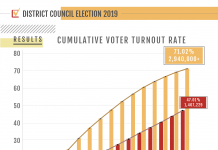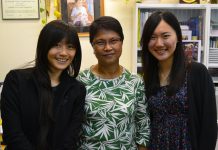E-textbooks have yet to win over all parents and teachers
By Natale Ching & Wing Chan
After a day at school, Primary Four student Anson Woo comes home and takes his iPad out of his schoolbag. Anson is not getting ready for an afternoon of online games, he is preparing to do his homework and the tablet is the “book” he uses for some of his lessons at school.
Anson’s school, St. Francis of Assisi’s English Primary School adopted e-textbooks for students from Primary Three to Primary Six two years ago and his mother has noticed some positive aspects of the change from traditional textbooks. “There is an interesting ‘read aloud’ function [on e-textbook],” says Mrs. Woo. “For instance, the Chinese e-textbook is equipped with a Putonghua ‘read aloud’ function. When his parents are not at home, my son knows how to read the words with this function.”
Woo recalls she had high expectations of e-textbooks because of their apparent advantages. She says it is a strain for Anson to carry his heavy schoolbag so she was happy he would only have to carry an iPad instead of a stack of books. The animations, interactive activities and colourful design of e-textbooks also boosted Anson’s learning interest.
But after two years, Woo concludes that the advantages have come at a price. She says Anson’s short-sightedness has become worse and he has become over-dependent on the iPad. Today, she is far more circumspect and even worried about e-textbooks.
The government is committed to promoting the use of e-textbooks and there are obvious advantages of this flexible, easily updated and interactive medium of teaching and learning. But three years after the administration approved funding for an e-textbook pilot scheme , the feedback from parents seem to be mixed.
Anson’s mother recalls the time that he came home in a panic saying: “Mum, my goodness! I can’t do my homework because the iPad ran out of battery! I forgot to charge it.” She says she was shocked by her son’s anxiety whenever his iPad was unavailable.
Woo’s concern prompted her to lock up the iPad during the summer holiday. She encouraged Anson to read printed books and pick up hobbies such as baseball, painting and chess to rid him of what she saw as an addiction. She thinks it is important for him to know how to learn without the iPad.
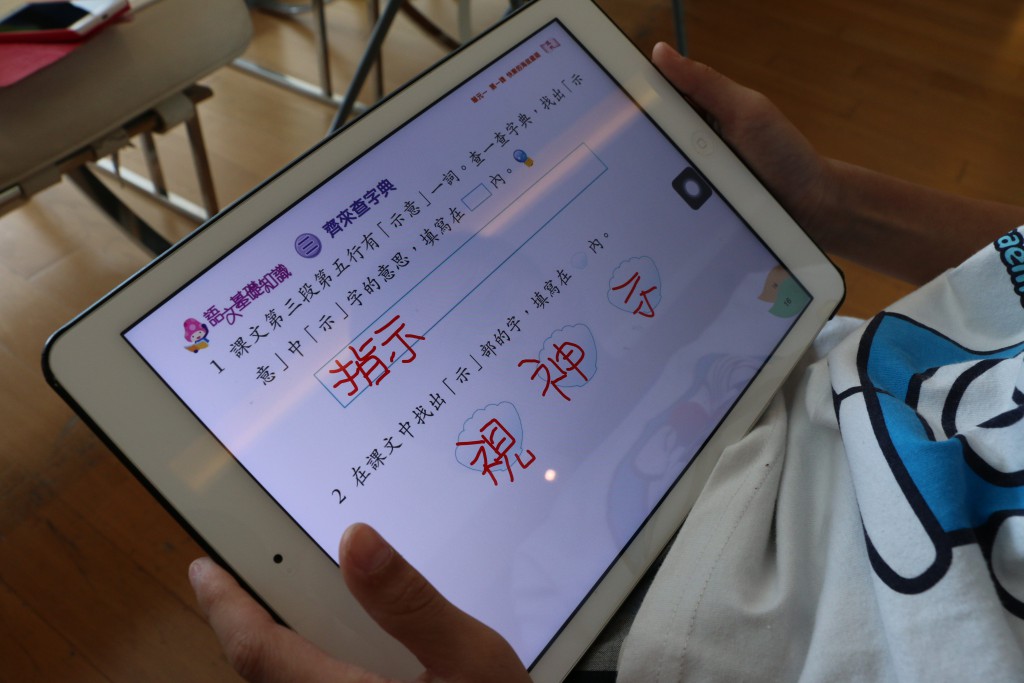
To further reduce Anson’s reliance on the iPad, Woo, like many other parents at the school, bought an extra set of Chinese and general studies printed textbooks just to discourage Anson from using the iPad when revising at home. After shelling out thousands of dollars for the device, plus a total of HK$1,300 for the e-textbooks – which is comparable to the cost of traditional textbooks – she ended up paying another extra HK$400. “It is never a cost-cutting solution for parents,” says Woo.
While she was frustrated by Anson’s dependence on the iPad, Anson was frustrated by bugs in the homework section of the mathematics e-textbook, which would occasionally clear all the work he had done. Anson and his classmates often had to take screenshots of all their finished homework to show their teacher just in case it was lost.
Anson also finds it hard to make notes on e-textbooks, as it is hard to doodle and type notes on an iPad. Even if he does manage to jot them down, he finds his messy notes hard to understand when it comes to revision time. His mother thinks writing on an iPad discourages Anson from learning the stroke order of Chinese characters.
Although parents like Woo have reservations about e-textbook learning, several schools in Hong Kong are vigorously pioneering e-textbooks as a medium of learning. One of them is Fung Kai Innovative School, Asia’s first Microsoft Innovative School.
The Sheung Shui primary school, which has around 700 students, was founded in 2008. The school’s new campus was built with a top quality IT infrastructure which was in place by the time the school opened. “We know if we want to widely push forward e-learning, we need to have quality hardware,” says Chan Yuk-sai, curriculum leader at the school. “Otherwise precious learning time would be wasted.”
Fung Kai students are required to buy a personal computer in Primary Two and the school installs the e-textbooks for them. Despite the widespread use of computers among the students, Chan says they do not have serious issues with their misuse. The school collects and inspects students’ devices every three months and often reminds students about IT ethics. Whenever they find any inappropriate apps, they delete them and inform the parents. The school also installs filtering software on every student’s computer to prevent them from visiting inappropriate websites. “Everything is neutral in itself. You could not blame the device if you could not use it properly,” says Chan. However, she adds the school cannot control students’ behaviour at home or their parents’ usage of the computers because of privacy considerations.

But what gives Chan a bigger headache is the shortage of IT talent among the workforce. With limited resources from the government, she says the school could only hire three technical support service officers (TSS) to support all the technical needs of teachers and students. The TSS staff and teachers have a huge workload but Chan is thankful for a sharing culture among the teachers who support each other on technical issues.
The sharing extends to the relationship between the school and some publishers. Fung Kai teachers design the animations, graphics and different applications that appear on e-textbooks produced by partner companies. The publishers charge them deeply discounted prices in return for their efforts in producing content for the e-textbooks.
In 2012, the Legislative Council Finance Committee approved a commitment of HK$50 million for the e-textbook Market Development Scheme (EMADS) to subsidise publishers to develop more e-textbooks. The long-term goal is to come up with an e-textbook list. More than 140 partner schools are currently using the e-textbooks developed by publishers who joined EMADS on a trial basis and provide feedback.
Thirteen publishers successfully joined the first phase of EMADS, including Open Knowledge Association Limited, a charitable e-textbook developer which sells Chinese and Putonghua e-textbooks at low prices to students who do not speak Chinese, have special education needs (SEN) or come from low-income families.
Melody Leung Lok-wan, the association’s business development manager says satisfying the demanding terms in EMADS is a huge challenge.
She says the hardest requirement is to make products that satisfy the needs of students with developmental dyslexia . They have to programme a function that provides voice-overs for every picture and sentence in the e-textbook. The time and costs of developing e-textbooks that can be used with different operating systems are also high. In total, 21 publishers successfully joined the EMADS in two phases but six dropped out from the scheme because of the difficulties and low profit margin.
Leung notes the Education Bureau (EDB) spends a lot of money on promoting e-textbooks, but the priority is to subsidise schools and students. “Schools and students always get the benefits first, and then comes the developers,” says Leung. She says the financial burden would be huge even if half of the development cost was covered by EMADS.
Still, she is optimistic about the future of the e-textbook industry as she thinks publishers find it easier to write and update e-textbooks. “You can foresee the form of education will be shifting to e-learning in the coming five years,” says Leung.
Daniel Cheung Ka-ki and Lee Ho-yin, teachers at SKH St. Mary’s Church Mok Hing Yiu College, agree. The school is an EMADS partner school and for the past three years, they have been promoting e-textbook learning and conducting e-textbook training in teacher professional development courses organised by the EDB.
Lee says it is difficult to encourage teachers to teach with e-textbooks as some of them do not have an adequate level of IT knowledge. “Some [teachers] don’t even know the home button leads you back to the home page [on the iPad],” he says. Cheung also recalls that some teachers could not handle technical issues arising in the trial lessons, which made them sceptical about e-textbooks.
However, he thinks teachers’ deficiency in IT skills is not the major problem because this can be overcome with training. Instead Cheung says some teachers and even school principals are close-minded about e-textbooks. “Teachers will ask, ‘Why would this iPad be better than a traditional textbook? We were all trained through teachings from textbooks and our teaching has been fine. Why should I have to change?’”
To overcome such prejudices and better illustrate the advantages of e-textbooks, Lee and Cheung organise classes and provide individual advice for schools that are also willing to implement e-textbook learning.
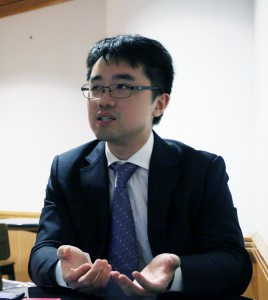
Cheung agrees that not every class or subject is suitable for e-textbook learning, especially in senior secondary classes as students have to prepare for public exams. “It might be good for interactive activities such as experiments if there is a video in an e-textbook [for demonstration],” he says. “However for some subjects that require intense exam practice, perhaps it is better not to use e-textbooks.”
It seems resistance to e-textbooks from some teachers and parents is holding back their development in Hong Kong, but Cheung thinks it is only a matter of time before they catch on. He says it took quite some years for teachers to shift from using blackboards to PowerPoint presentations. Therefore he predicts another eight to 10 years is needed for a shift from printed books to e-textbooks among teachers.
Jeff Sze Chun-fai, the political assistant to the Secretary for Education, says firmly that “e-textbooks will not replace printed textbooks,” when explaining that the ultimate aim of the government is to empower students to self-learn in this technological era, rather than make students use them in all subjects.
Responding to e-textbook publishers complaints about the tough clauses in EMADS, he says the EDB cannot amend the terms easily as the Legislative Council Finance Committee would question the change. He says the purpose of EMADS is to gain experience in e-learning. “Schools have to feel prepared first,” Sze explains. “Trial lessons are a partnership [between publishers and schools]. The role of government is as a middleman…and to ask for funding from the Legislative Council to support publishers.”
Apart from being a middleman, Sze adds the government’s involvement is a strong guarantee to ease schools’ concerns about e-textbook learning, such as the quality of different e-textbooks. He says the government has already implemented other policies to advance e-learning, such as providing 900 public sector schools with funding to enhance their Wi-Fi infrastructure in three years and giving around HK$700,000 to every school to purchase e-learning software and materials.
There have been a lot of obstacles, but Sze says the EDB is already thinking about the next step in pushing e-learning. “We could not force teachers to use e-textbooks. We just need to give them time to get ready,” says Sze. “We will continue to implement e-textbook learning because it is the trend.”
Edited by Henry Lee




